

Anthony Crawford
1990 Lamborghini Countach review
6 Days Ago
Ford’s all-important, all-new Escape makes a stronger case for your mid-sized SUV dollar. But does it shine brightly enough in all of the right places?
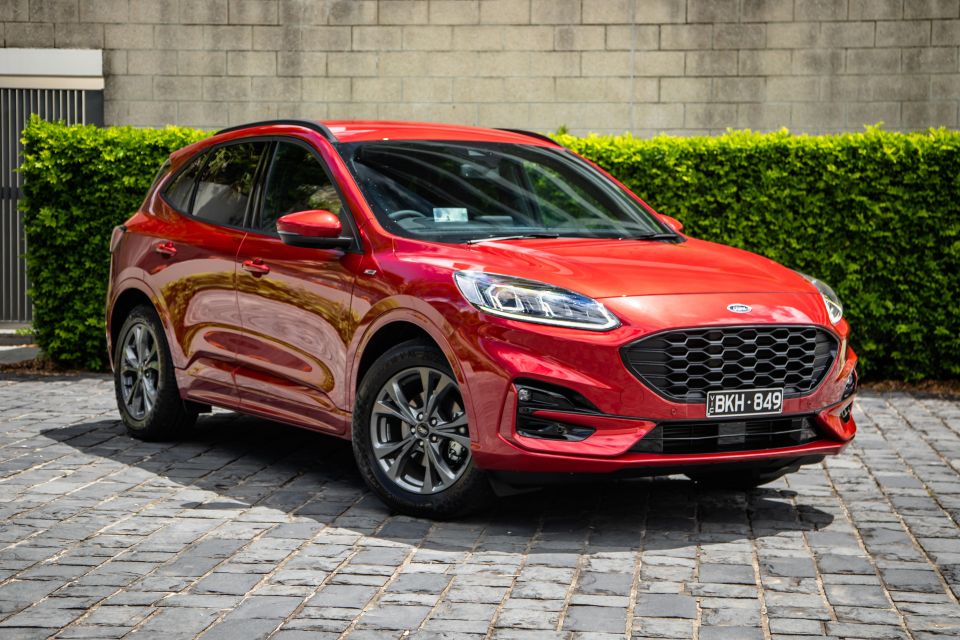
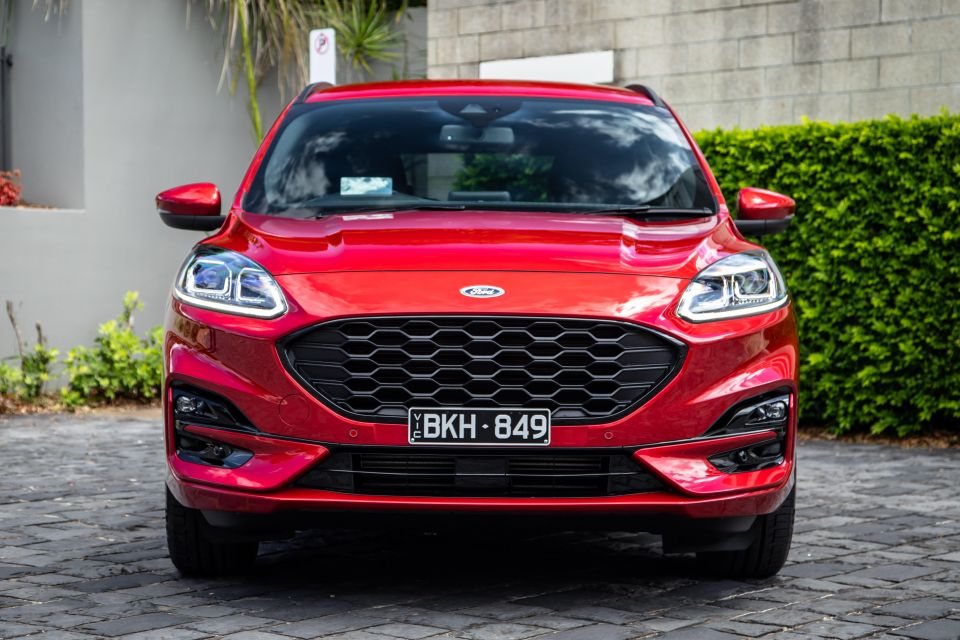

Journalist
New from
$28,990
excl. on-roads

Journalist
New from
$28,990
excl. on-roads


Journalist
New from
$28,990
excl. on-roads

Journalist
New from
$28,990
excl. on-roads
Quickly see how this car stacks up against its competition. Select any benchmark to see more details.
Where expert car reviews meet expert car buying – CarExpert gives you trusted advice, personalised service and real savings on your next new car.
The Ford Escape has traditionally struggled to strong-arm its way to top of shoppers’ medium-SUV short lists, and the fact the outgoing model has long been critically well-regarded if perennially ignored by Aussie buyers must have surely caused much head-scratching at Ford Australia.
Did the ‘Kuga’ stigma remain a hangover after the range was rebadged Escape in 2017? There’s a buzzkill to blokey potential owners. Did its Euro-derived roots and Americanised styling just not gel together deftly enough for local and increasingly Asian-trending tastes? Maybe… possibly. It’s tough to pin down, right?
Perhaps this new fresh-sheet version will clean the slate thoroughly enough to reset perceptions of a likeable model from a marque that creates some properly desirable machinery in other model lines.

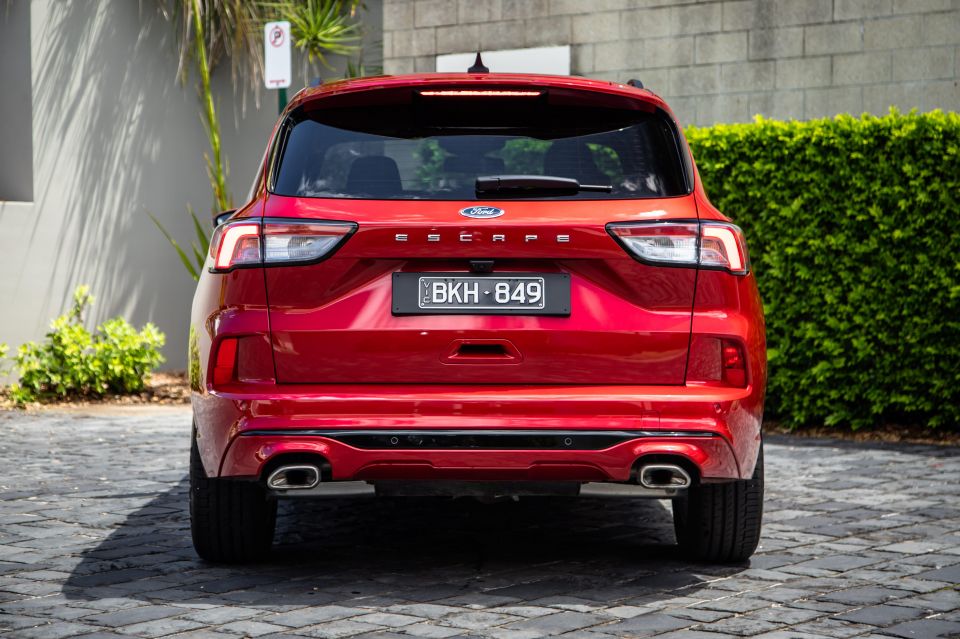
Perhaps the striking new Vignale flagship might’ve represented new Escape in the freshest light, but here we’ve got a variant combination perhaps best-suited to Aussie tastes in blending goodness, sportiness, and perceived value for money: the mid-grade ST-Line with all-wheel drive.
It’s arguably the do-it-all version for a nation where many buyers tend to be drawn to such a pitch, and it’s the range’s entry point if you’re looking for all-paw traction.
The new look? It’s less slab-sided and no longer so overly truck-like in the nose, with a curvaceous form that’s more European and slightly reminiscent of both the Mazda CX-5 and, dare I say it, the Porsche Macan. Gone is the almost aggressively angular interior design, replaced by an airier and more homogenous vibe potentially more palatable to wider tastes.
Leaner, smarter, techier and more upmarket, the range promises to improve where a new generation should, in line with where today’s mid-SUV buyers are looking. And the ST-Line brings the added promise of offering the most “sporty, engaging (and) focused” experience of the three versions hitting showrooms this month.
So, does it deliver well enough and differently enough to its forebear to stoke the flames of enthusiasm? Because if it’s a larger, lusher take on the recently-launched and rather excellent Puma small SUV, Ford is definitely pushing its crucial mid-sizer in the right direction.
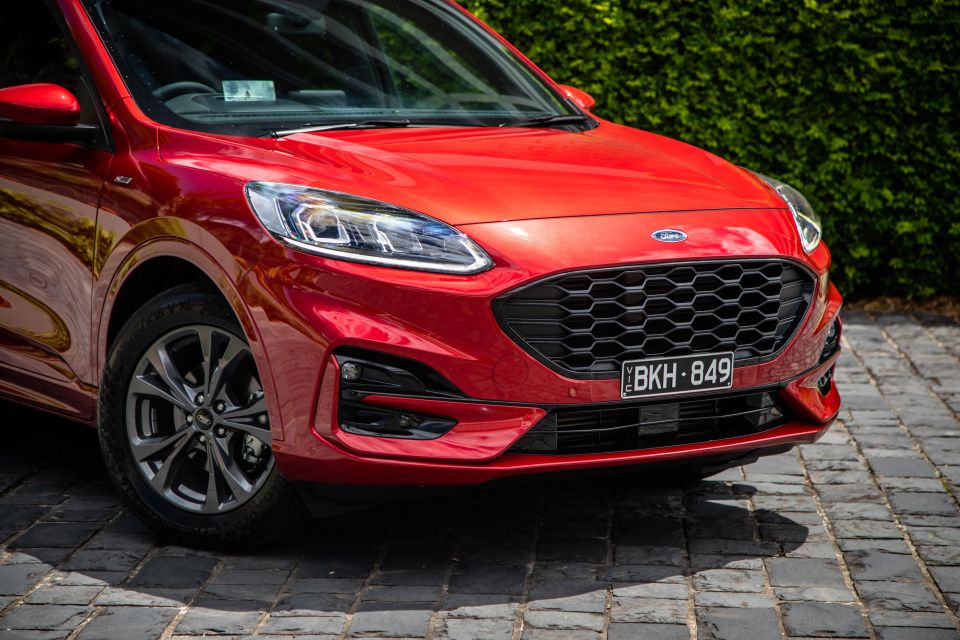
At $40,990 before on-road costs, the ST-Line AWD is the middle of three trim levels, and is $3000 pricier than the ST-Line fitting front-wheel drive ($37,990 list).
If all-paw traction is a must, the only other option in the five-strong range is the Vignale AWD ($49,590 list).
Ford Australia is launching base and petrol ST-Line versions with drive-away pricing, with our tester priced at $41,990 on the road. Get in quick; during these unprecedented times Ford will also lop $500 off if you take an in-person test drive and purchase in November and December.
Given around 17 per cent of new cars sold are medium SUVs, there are “around 20” competitor nameplates by Ford’s own reckoning. Cross-shopping alternatives on list pricing alone is less a selection and more a very deep rabbit hole. And that’s before you compare discounted offers.
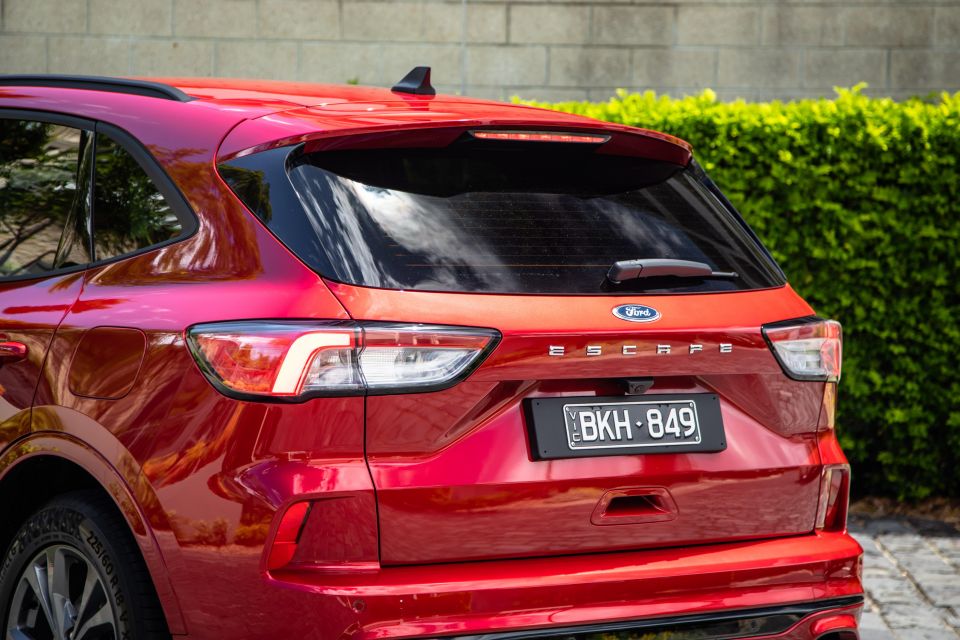
In petrol and AWD options, the ST-Line faces off against usual and popular suspects such as Mazda CX-5 Touring ($40,980 list), Honda CRV VTi L ($40,490 list), Hyundai Tucson Elite ($41,200 list), Mitsubishi Outlander LS ($37,990 list), Nissan X-Trail N-Trek ($40,700 list), and Subaru Forester 2.5i Premium ($40,440 list).
For a bit more in petrol all-drive territory and you’ll get into the Kia Sportage GT-Line ($45,290 list) or Volkswagen Tiguan 132TSI Comfortline ($43,990 list), while further up is Toyota’s petrol-only RAV4 Edge ($48,915 list).
Cost options are few. Our test car has premium Lucid Red paintwork at $650 – one of 13 available colours – and the ST-Line Pack that, at $2800, adds Matrix LED headlights, a head-up display, heated front seats, and a powered tailgate with foot-operated gesture control.
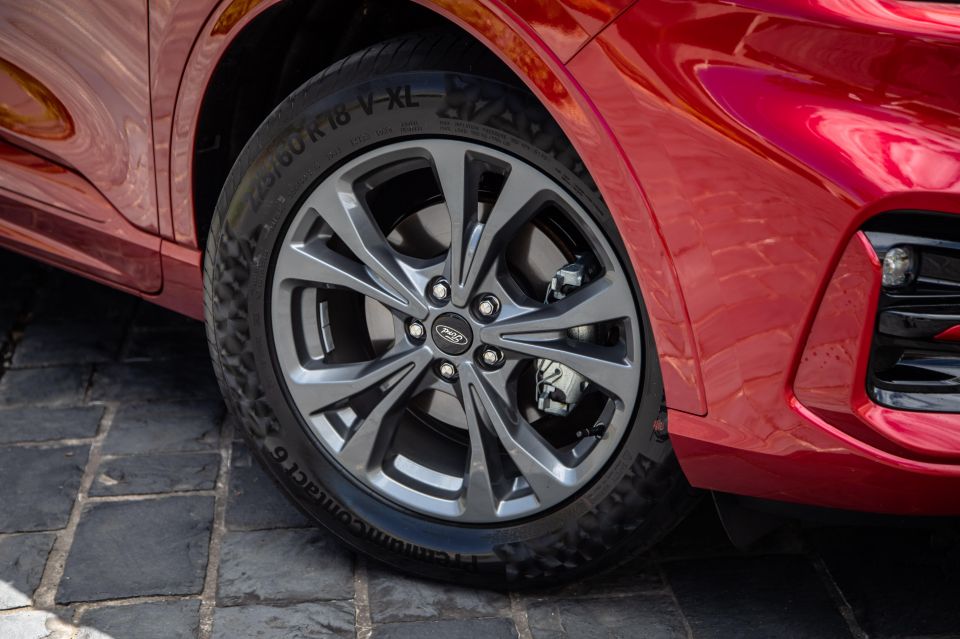
Off the bat, somewhat unsurprisingly, the ST-Line gets specific exterior styling – even the grille is unique – with a larger rear spoiler and grey-effect 18-inch alloy wheels. It sits on a specific lowered and firmer suspension tune, too. You need to move up to the Vignale to get a choice of larger 19- or optional 20-inch wheels, though.
Inside, the ST-Line upgrades over the base version (simply called ‘Escape’) with its showy 12.3-inch digital driver’s instrument cluster, a flat-ish-bottom steering wheel with paddle shifters, red top-stitching, and metallic pedals.
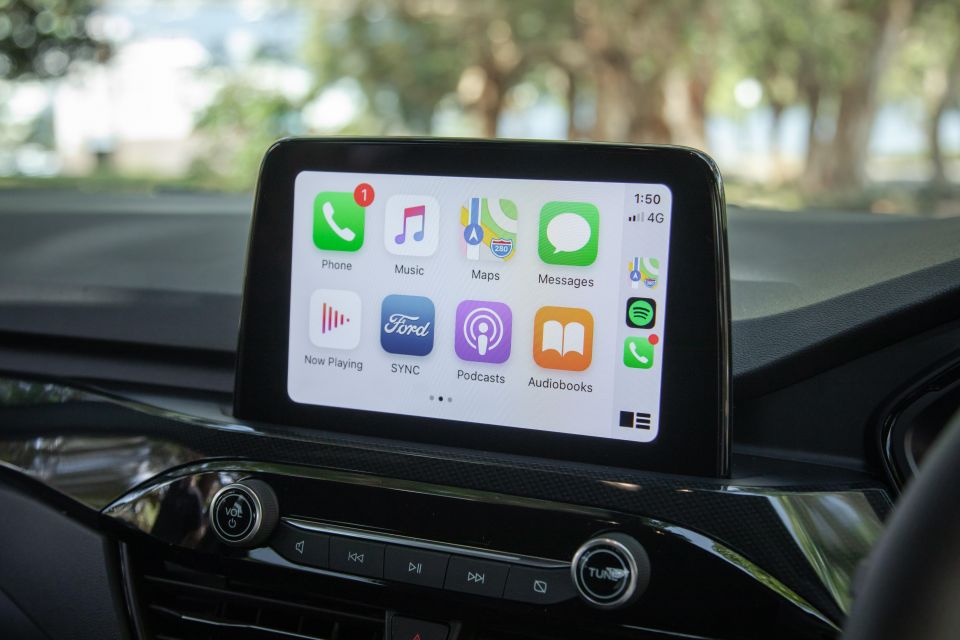
Elsewhere, though not exclusive to ST-Line, are LED headlights and tail lights, power-folding mirrors, rain-sensing wipers, adaptive cruise control, front and rear parking sensors, and functions like remote start-up via the FordPass phone app and embedded on-board modem.
The cabin features cloth trim, mechanical seat adjustment, push-button start, dual-zone climate control with rear air vents, an electric park brake, inductive phone charging, and an 8.0-inch touchscreen infotainment system featuring DAB+, satellite navigation, a reversing camera, six-speaker audio, and wired Apple CarPlay and Android Auto.
Though it doesn’t fit sport seats per se, the front passenger does get height adjustment while the rear 60:40-split bench offers both slide and tilt functionality. The cabin fits both USB-A and USB-C ports in both rows.
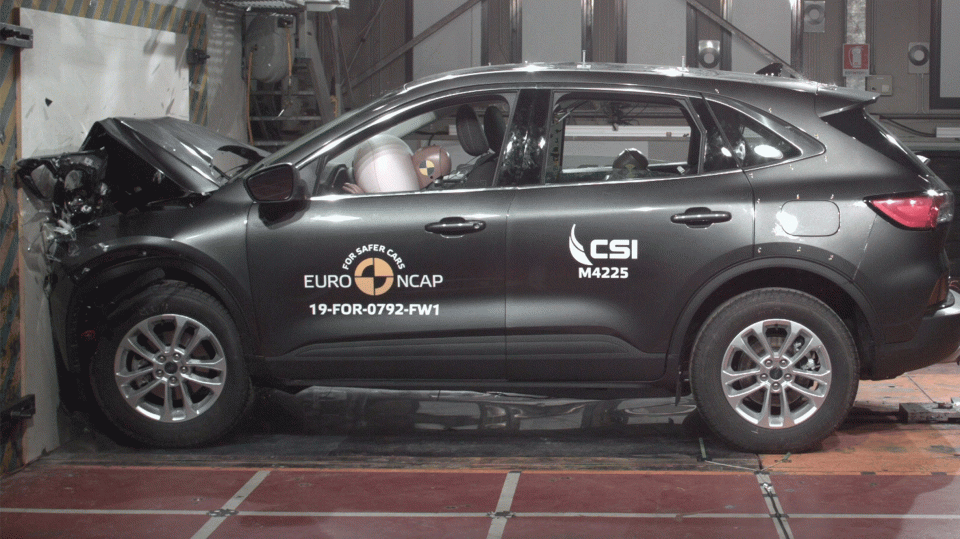
ANCAP has awarded the Escape range a five-star safety rating based on tests conducted by Euro NCAP in 2019. This excludes the forthcoming PHEV version, however, which remains unrated for now.
The Escape scored 92 per cent for adult occupant protection, 89 per cent for child occupant protection, 82 per cent for vulnerable road users, and 77 per cent for safety assistance.
Our Escape has six airbags, as well as city and interurban autonomous emergency braking with pedestrian and cyclist detection, forward collision warning, lane-departure warning, lane-keeping assist, traffic sign recognition, a driver impairment monitor, and emergency assistance functionality that contacts emergency services and sends your GPS location in the event of an accident.
Also included are technically-related technologies such as adaptive cruise control with stop/go and a speed limiter, plus active lane centring (which is perhaps more a convenience than safety feature).

For the “sporty, engaging and focused” version, the ST-Line cabin is largely a homogenised SUV affair. It’s pleasing enough with a decent sense of spaciousness – even with the conspicuously fake carbon-look inlays – though it doesn’t feel like much of an upgrade from the base model bar the conspicuous digital instrumentation.
When it comes to start-up, shutdown, and drive mode altering theatrics, the 12.3-inch digital screen’s content takes some beating. The elaborate skin-swapping trick is neat, though the novelty factor does wane quite quickly.
The optional head-up display is quite handy, including speed sign recognition advice that – like most commercialised systems – is less than wholly accurate sometimes. It’s also a shame its plastic screen reflects daylight off the steering column, diminishing viewing clarity.
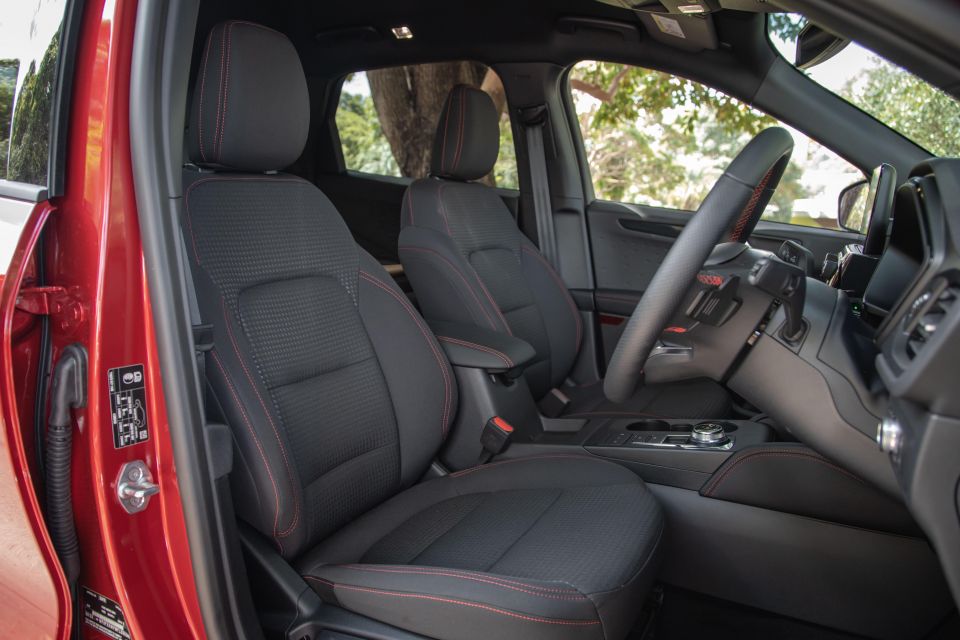
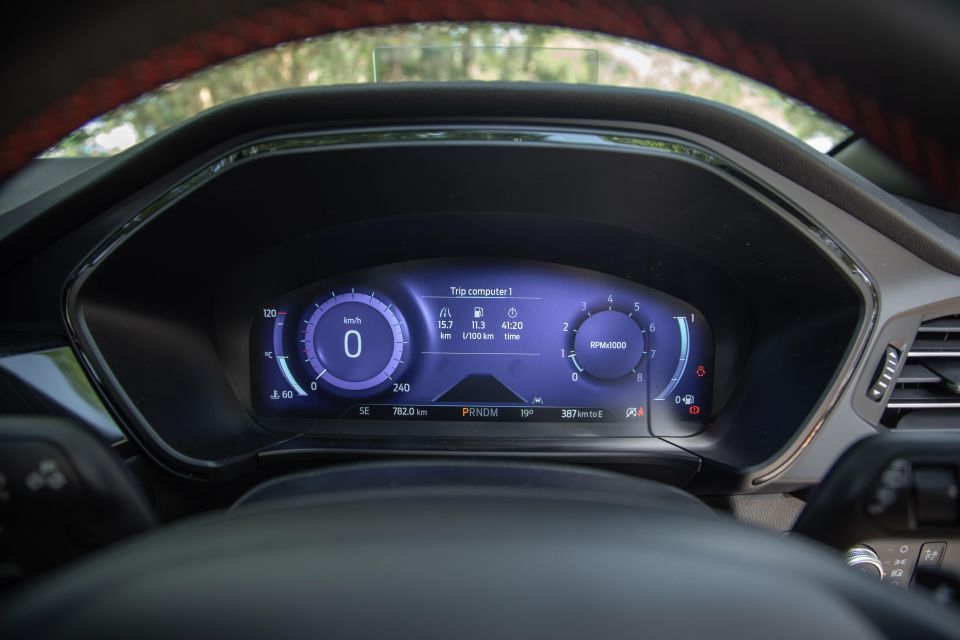
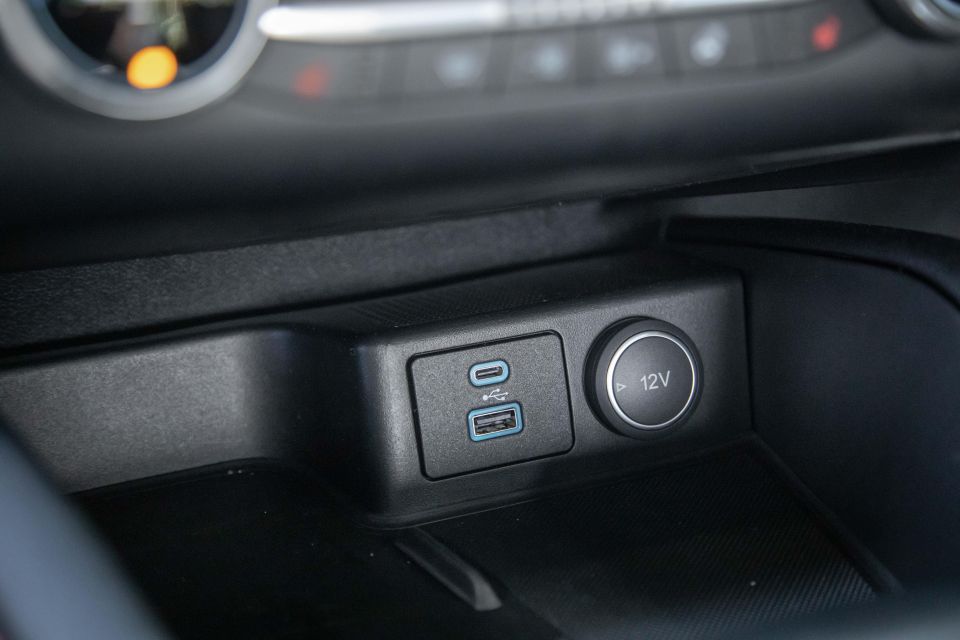
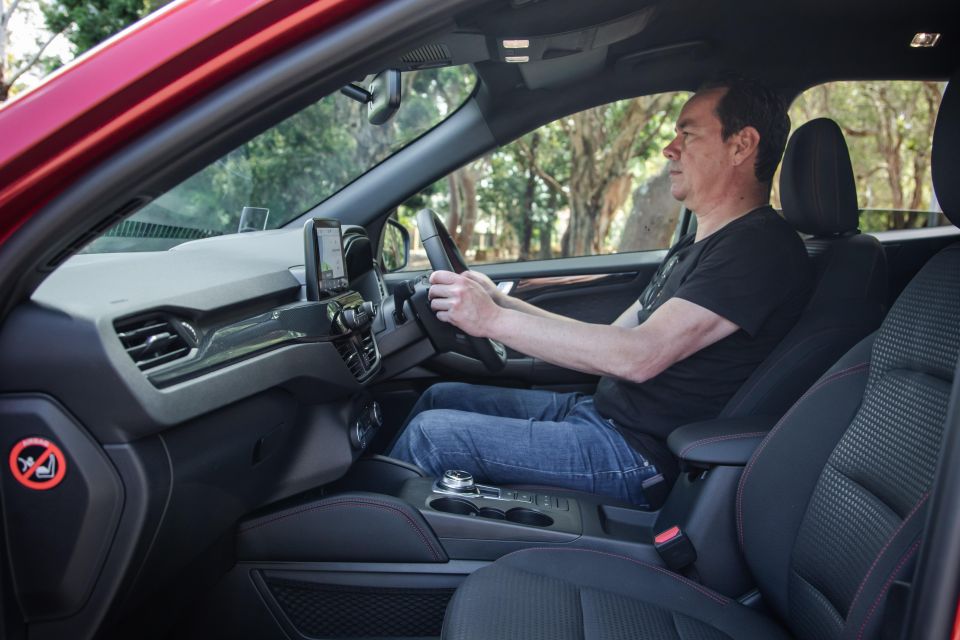
The red stitching adds little flair to compensate for the overly flat back support that lends little in the way of lateral body control, and the flat-bottom wheel loses its sporty effect for no other reason than the driver’s seat, even as low as you can possibly set it, is just too damn high.
It’s proper captain’s chair stuff to the point where I wonder how drivers shorter than I might comfortably reach the pedals, and it robs the ST-Line of any sportiness it otherwise aspires to conjure.
The monochromic grey scheme is uninspired but the trim and material choice is quite tactile, even if it doesn’t appear so in areas – the hard plastic-looking door cards are actually soft to the touch.
Large door bins, convenient dual cupholders, huge bottle cavities in the door bins, rubber-ringed dials and the decent switchgear are all decent and well-resolved but as a cabin it’s low on surprise and delight.
Sync 3 remains one of the easiest and most logical infotainment formats out there even if the radio station select and DAB+ refresh functions are cumbersome and distracting. Meanwhile, the rotary transmission controller is a like-it-or-lump-it affair but at least it brings something nice and unique to the cabin design.
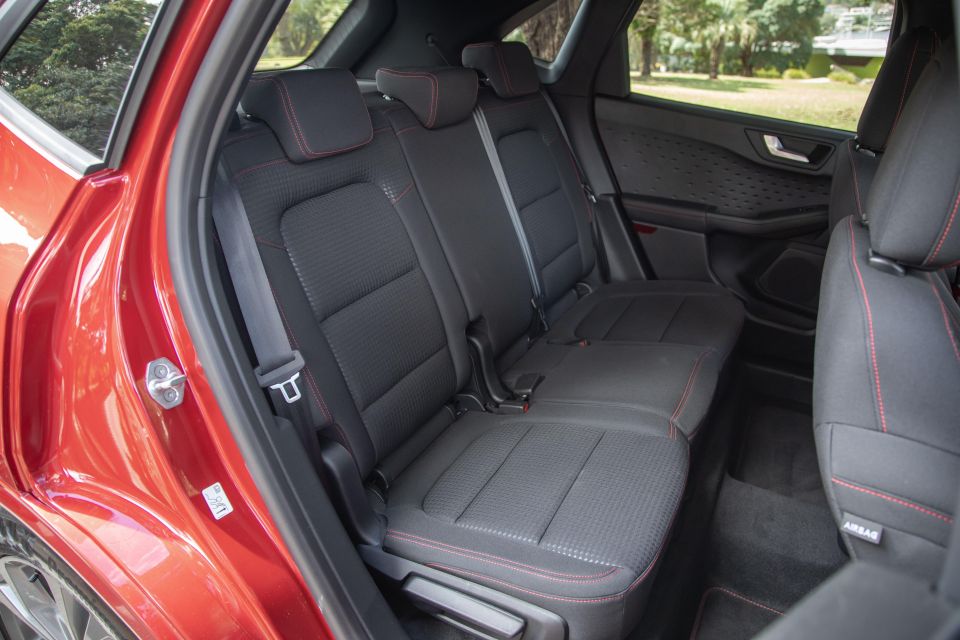
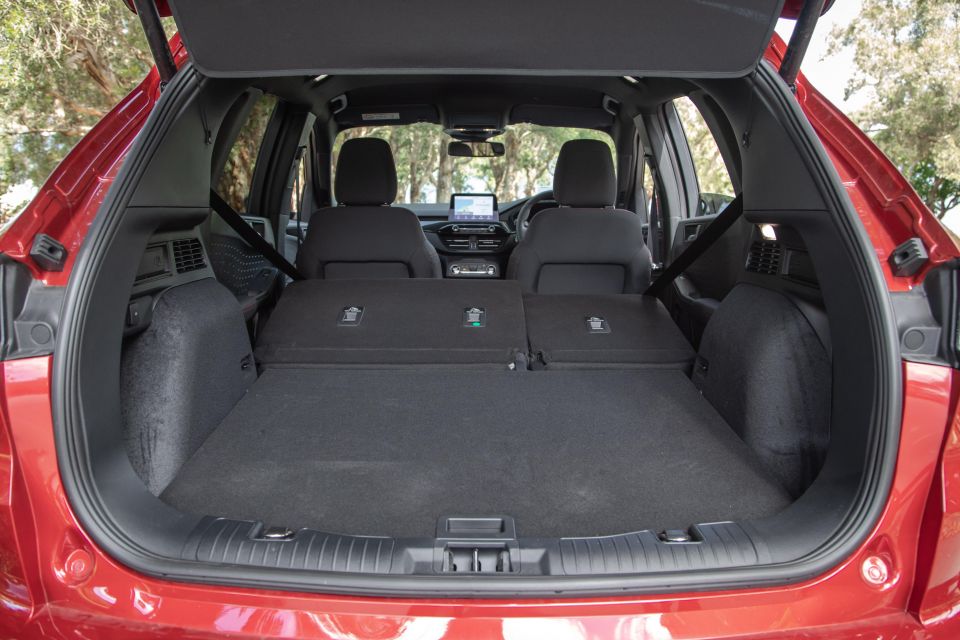
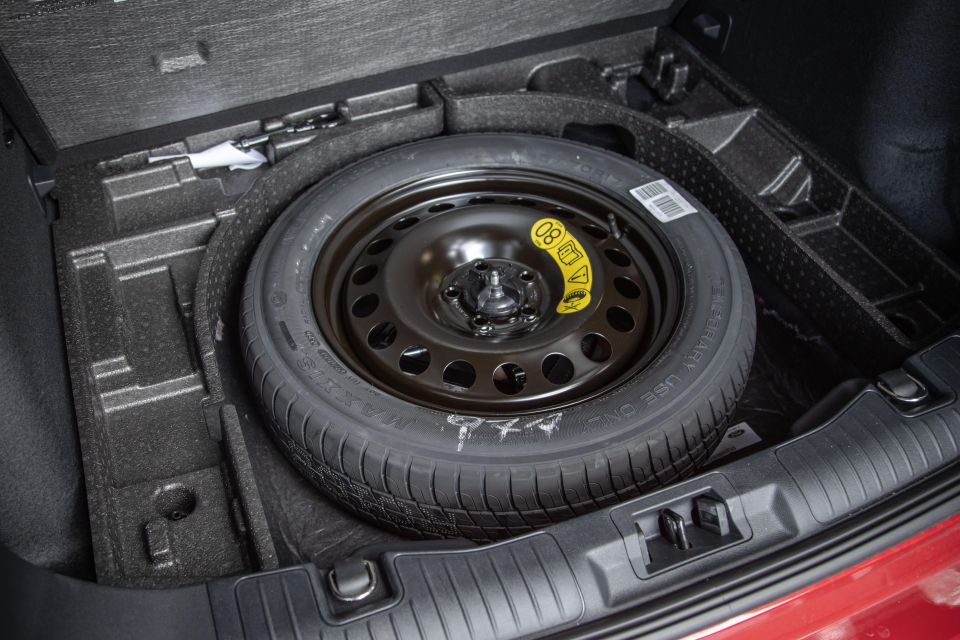

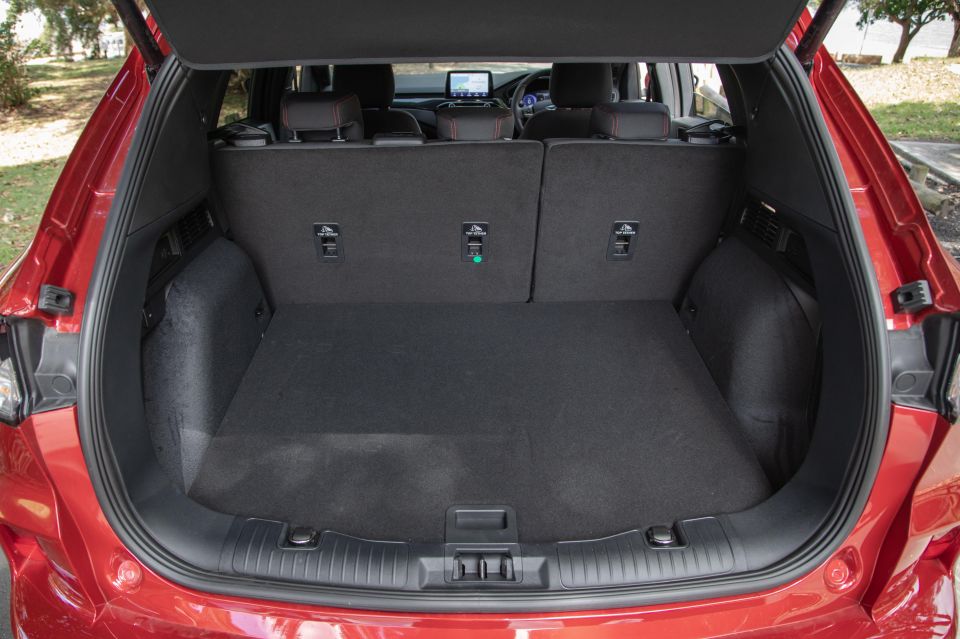
Row two is excellent. Ford claims segment-leading roominess and, with the bench slid back and seatback tuned for comfort, it’s downright limousine-like save for the unremarkable headroom created by the high rear seat bases. It’s great for adults, but also really good for kids’ visibility.
Rear vents and dual USB ports are welcome inclusions and the only real compromise is the fact the rear window glass doesn’t completely sink into the sill when all the way down.
Boot space is quoted as 556 litres, presumably with the rear seat set fully forward, though balancing a decent amount of second row accommodation and luggage capacity is easy given how much available space there is. It expands to a maximum 1478 litres with the 60:40 rear seating stowed.
The flimsy fabric parcel shelf appears like an afterthought until you realise just how convenient it is to stow under the floor atop the space saver spare. A 12V outlet and remote fold levers for the rear seats are welcome additions, too.
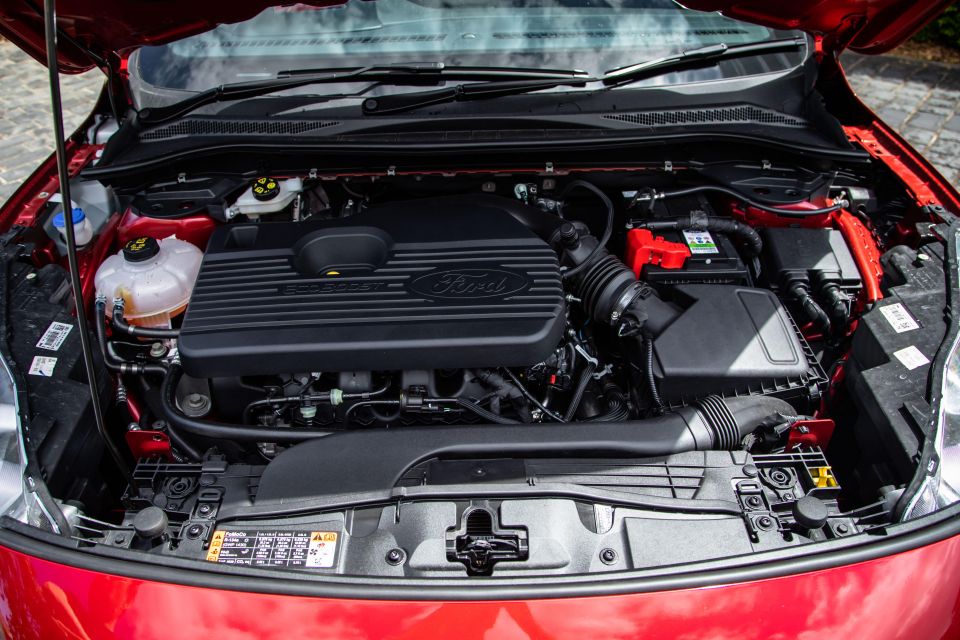
Like its predecessor, the new Escape plays on offering one of the gustiest turbo powertrains in a segment populated by a motley mix of decent naturally-aspired fours and smaller-capacity force-induced units. While the ST-Line doesn’t get more power than the base Escape, the entire range fits a lusty ‘full-sized’ 2.0-litre turbocharged four outputting a fairly formidable 183kW and a serious 387Nm.
That’s a decent lift in power and significant torque benefit compared with, say, the Sportage (135kW/237Nm), RAV4 (152kW/243Nm), CR-V (140kW/240Nm) and Forester (136kW/239Nm) to name four key rivals. Not far from this price point there’s also the turbo CX-5 (170kW/420Nm) and GTI-powered Tiguan (162kW/350Nm).
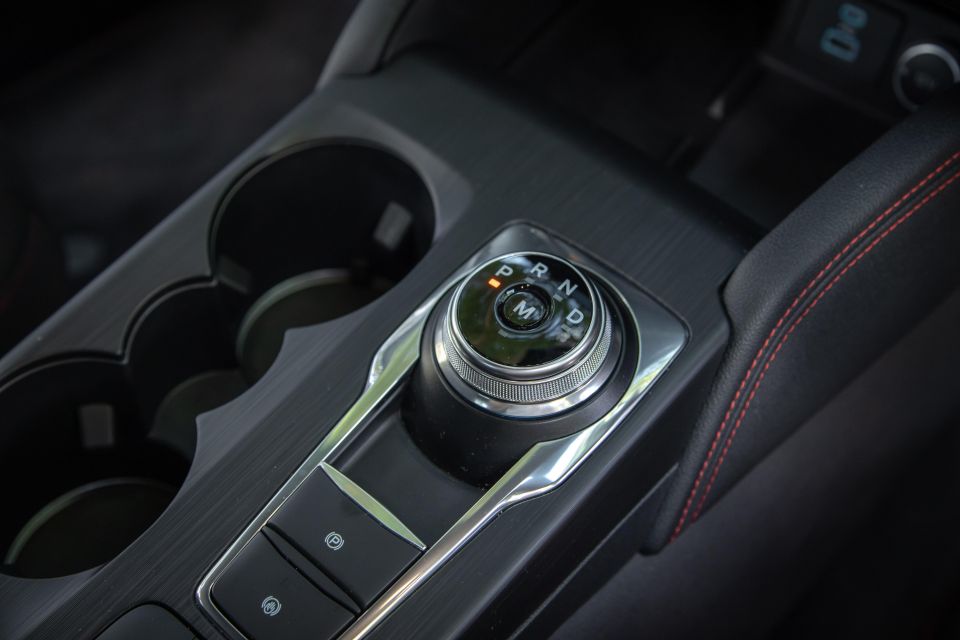
Ford made no performance claims at the Escape’s local launch event other than offering the new Escape is around 10 per cent quicker than the old one.
The engine is paired with a new “quicker-shifting” eight-speed conventional automatic with all-paw traction in our test car. The new Escape sits on the ‘C2’ platform shared with the Focus small car and features new electric steering and a revised suspension design.
Combined-cycle fuel consumption is 8.6L/100kms with a 95 RON minimum, and we saw between 8.5L and 10.0L per 100km from the trip computer during our time with the ST-Line AWD.
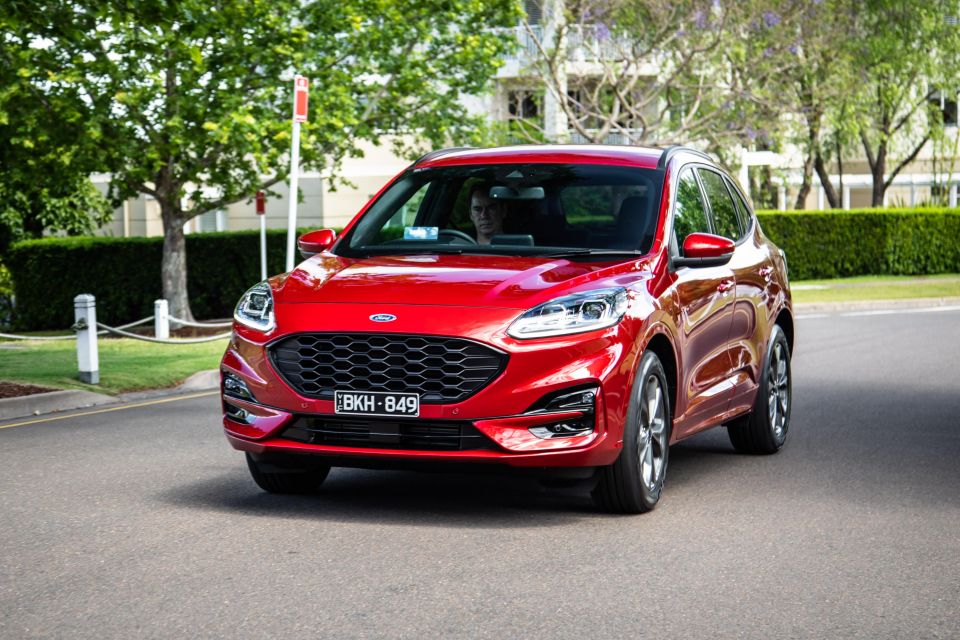
It’s a brassy move kicking off a presentation on an all-new SUV range by listing handing, steering, and dynamic capabilities as key highlights. Even if customers don’t rank such facets as priorities, clearly Ford does. Again, the ST-Line in particular is claimed as the most sporty, most engaging and most focused of its herd.
After coming away from the new Puma seriously impressed with its driver-centric on-road acumen just a few weeks prior, I expected big things from its larger stablemate. Instead, it’s just good, rather than demonstrating exceptional levels of touted virtue that might’ve pegged it as the mid-sized SUV for keen drivers.
The C2 platform is a great foundation and its on-road manner is underpinned by fine fundamental handling traits – it certainly points and reacts without lethargy or slack. It’s just the tuning of the systems varies between fine and merely adequate.
Ford claims the steering is tuned for low effort but decent torque build-up as feedback. It’s certainly airy and void off-centre and at low speeds, but it doesn’t exactly transform into much else with enthusiastic cornering. It’s easy to use, then, if not all that sporty in vibe or character at all.
Ride comfort is decent and the chassis settles nicely on the move, where its body mass damps vertical movement well, but around town and across the lumpy stuff and damper hardware is slightly terse. And even with thick 60-series tyre sidewalls, the cushioning effect over small imperfections is merely okay.
A taut state is fine, of course, in trade for assertive ‘sporty’ body control but there’s a soft edge in the dynamic character that doesn’t walk the walk and encourage enthusiastic driving.
The real buzzkill is the driver ergonomics – the high seating, slightly too-low wheel and flat seat contours that just offer no lateral upper-body support. None of it entices you to delve into a chassis that, again, might respond well and react satisfyingly enough to a vigorous punt, if you might actually be bothered.
The edification from the lusty powertrain, though, is instant. Forget Sport – the responsive alertness to throttle input and torquey thrust in Normal drive is ample, be it off the mark or on-demand when overtaking. In fact, it’s a little too peaky at times, forcing a more concentrated right foot action than it ought to. A few times in traffic I opted for Eco just to dull the sheer eagerness of the powertrain.
The benefits of all-paw traction? It’s not a lot with fair-weather driving, but we happened to cop a bucketing or three during our time with the ST-Line, including aquaplane-inducing standing water, and all-wheel drive does pay dividends when you’re faced with dicey conditions with so much torque goodness easily plied through the right foot.
It’s certainly worth the $3000 splurge, particularly if you frequent broken or slippery surfaces.
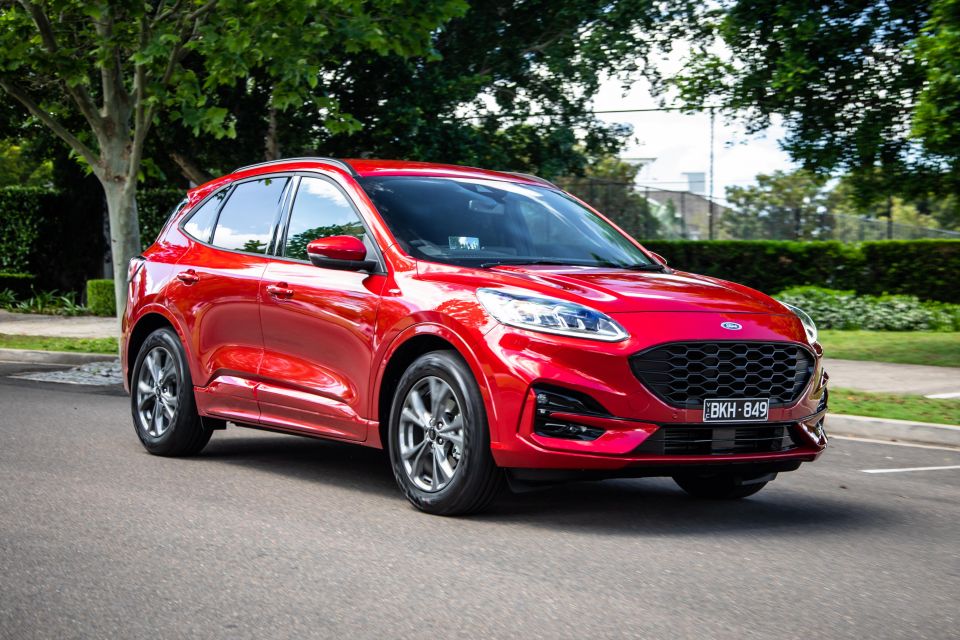
Where expert car reviews meet expert car buying – CarExpert gives you trusted advice, personalised service and real savings on your next new car.
The ST-Line is at its happiest and most rewarding on the open road. There’s not much sonic glory to be had and it becomes more pleasantly quiet at cruising speeds. The lane-centring function seems to activate automatically in tandem with cruise control and it’s a slightly frustrating system at that.
It demands quite a bit of muscle to counter its slightly meandering in-lane guidance, but resist the urge to ‘fight’ it and you’re greeted with incessant in-dash commands to regain control of the wheel, even when you haven’t removed your hands.
Active lane centring is fast proving itself more of an inconvenience than a benefit. And I’ve not used any maker’s system yet that doesn’t dissuade me from diving for the ‘off’ button as quickly as possible.
For the most part, the active safety systems operate transparently and without much cause for surprise. The forward collision warning calibration is a little on the conservative side but no more proactive than most rival systems. The Matrix LED headlights, though, are brilliant, sweeping and adapting to the road ahead – or carpark walls – with excellent illumination.
It’s easy to park, too, with decent all-round vision, well-calibrated sensors, and an adequate reversing camera view. The turning circle, at 11.4 metres, is a little on the broad side if you want to nitpick.
All up, it’s a finer SUV than it is a sporting device, and perhaps that’s how it should be.
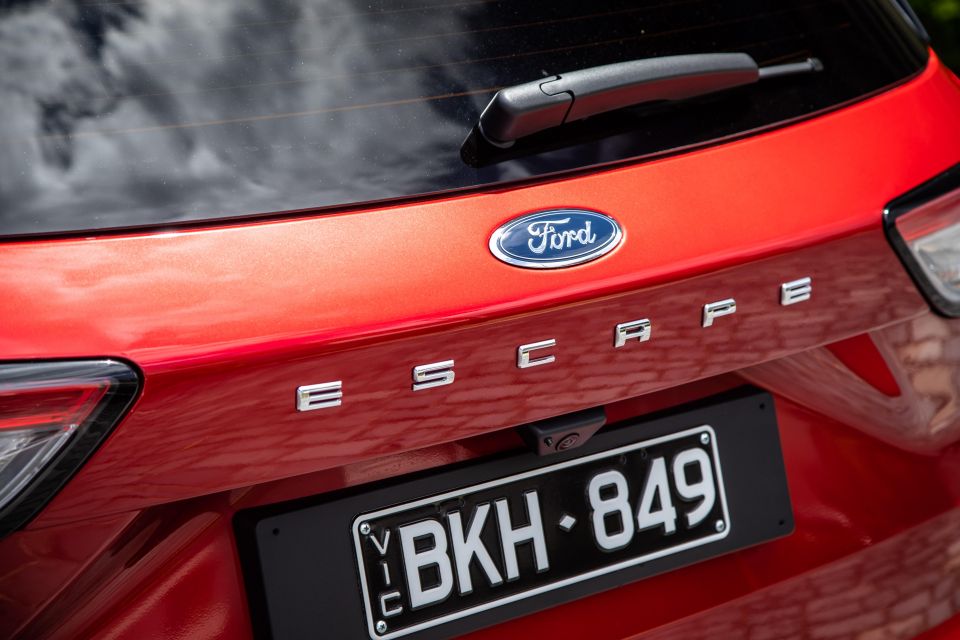
Ford offers five years of unlimited-kilometre warranty on the Escape ST-Line AWD. That’s fairly average and quite acceptable for a mainstream family hauler, if shorter than Kia and Mitsubishi offer.
Servicing is capped at $299 per visit on a 12-month/15,000km schedule for up to 48 months/60,000kms.
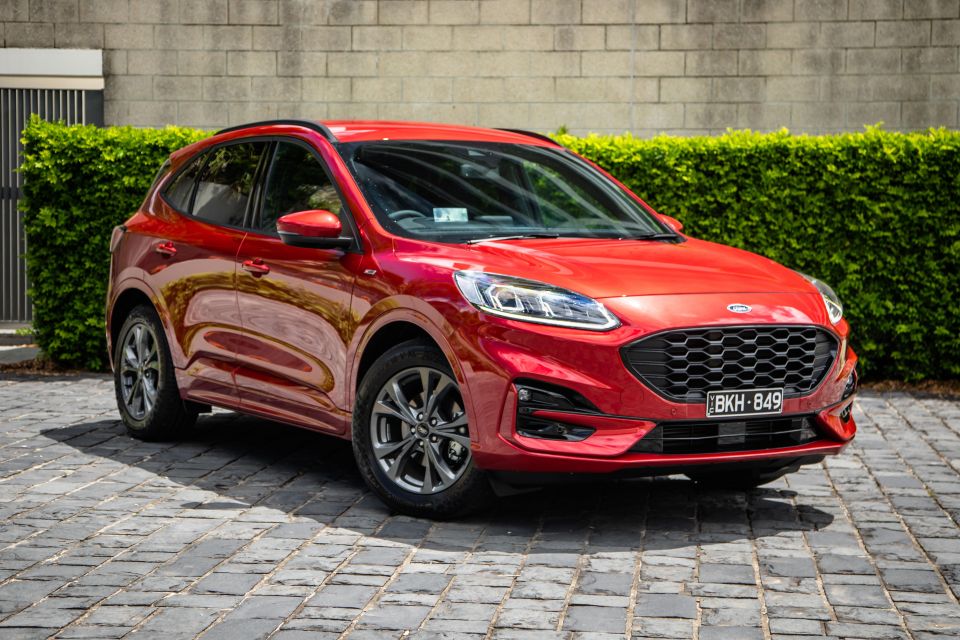
The all-new contender and its red-misted ST-Line iteration have a fit enough combination of virtues to earn a place on SUV buyers’ short lists. But then again, so did the last version that proved only modest in its ability to convert shoppers into owners.
Your reviewer here reckons this newbie offers more appealing styling and it plays its strongest suits of performance and adult-friendly accommodation quite convincingly. Hopefully for Ford, the former puts more bums after the latter stuff in Escape seats.

There’s certainly some other stuff in arguably the last five per cent of execution Ford could’ve done better, and much of it plays against the ST-Line’s sporty premise and promise – even if the shortcomings mightn’t bother nor deter many buyers after a swift family hauler with a bit of an athletic vibe. With a few relatively minor tweaks, it could be quite a bit better than it is.
In fact, with equal poke, potentially more measured suspension tuning and not much lacking in key equipment – digital dash notwithstanding – the basic $36,000 Escape could well be the dark horse of the segment for those wanting roominess and pace at a properly enticing price.
Click on the images for the full gallery
MORE: 2021 Ford Escape pricing and specs MORE: Ford news and reviews
Where expert car reviews meet expert car buying – CarExpert gives you trusted advice, personalised service and real savings on your next new car.


Anthony Crawford
6 Days Ago


Matt Campbell
5 Days Ago


James Wong
4 Days Ago


Max Davies
2 Days Ago


Josh Nevett
1 Day Ago


Josh Nevett
17 Hours Ago